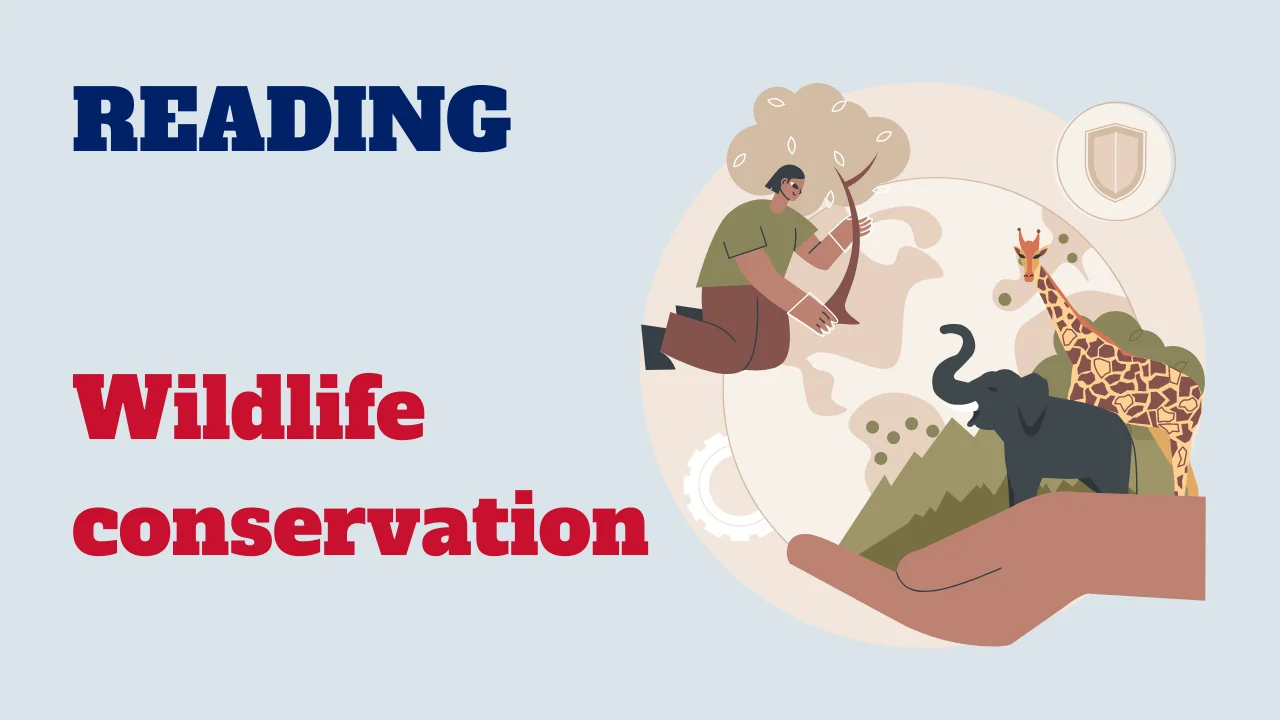Welcome to an exploration of wildlife conservation! In this reading activity, we’ll delve into the critical importance of preserving Earth’s biodiversity and the various threats facing wildlife.

Get ready to learn about the challenges and strategies involved in protecting our planet’s precious natural resources.
Text: Wildlife conservation
Wildlife conservation is the practice of protecting wild species and their habitats to ensure biodiversity and the health of ecosystems. This effort is critical not only for the survival of individual species but also for maintaining ecological balance, supporting human livelihoods, and preserving natural heritage.
The urgency for wildlife conservation arises from the alarming rate at which species are becoming endangered or extinct. Factors contributing to this crisis include habitat destruction, climate change, pollution, poaching, and invasive species. Deforestation for agriculture and urban development, for example, eliminates crucial habitats for countless species, pushing them to the brink of extinction.
Efforts to conserve wildlife encompass a variety of strategies. One key approach is the establishment and management of protected areas such as national parks, wildlife reserves, and marine sanctuaries. These areas provide safe havens where species can thrive without human interference. Additionally, conservation laws and regulations, such as the Endangered Species Act in the United States and the Convention on International Trade in Endangered Species (CITES), play crucial roles in protecting species from exploitation and trade.
Community involvement is another vital aspect of effective wildlife conservation. Engaging local communities in conservation efforts ensures sustainable practices and helps in the protection of local biodiversity. Programs that promote eco-tourism, for instance, provide economic incentives for communities to preserve their natural environments.
Scientific research and monitoring are also integral to conservation efforts. Understanding species behavior, genetics, and ecology helps in developing effective management plans and breeding programs, such as those implemented for critically endangered species like the giant panda and the black rhinoceros.
Despite these efforts, wildlife conservation faces significant challenges, including limited funding, political instability, and competing land-use demands. However, the global recognition of biodiversity’s importance has led to increased collaboration among governments, non-governmental organizations, and the private sector.
In summary, wildlife conservation is essential for maintaining biodiversity and the health of our planet. Through protected areas, legislation, community involvement, and scientific research, concerted efforts are being made to safeguard the natural world for future generations.
Comprehension questions
Congratulations on completing the exploration of wildlife conservation! By understanding the challenges facing wildlife and the strategies used to protect them, we can all contribute to preserving Earth’s biodiversity. Remember to take action and support conservation efforts in your community. Together, we can make a difference in safeguarding our planet’s natural treasures for future generations.



